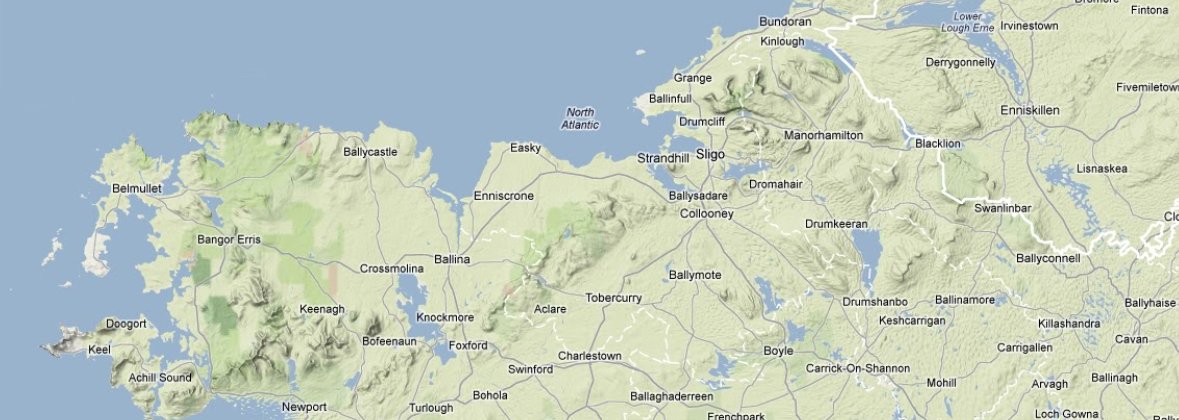Lockheed Hudson, FH263, Bellmullet, Co. Mayo, 1942
The 15th of April, 1942, seen another of the many RAF Ferry Command aircraft forced to make an emergency landing on the shores of Ireland.
At about 09:30 hrs on that morning an aircraft was observed to
have made a landing on the shore of Elly Bay, four miles north
of the Irish Coastwatching Service Look Out Post (LOP) at
Blacksod and 8 miles south of the town of Belmullet. The
aircraft was reported to be a Hudson bomber with the serial
number "F 4 263". The Hudson would be familiar to the Irish
military as one such machine was in service with the Irish Air
Corps having crash landed in Sligo the previous year. That
particular aircraft was bought from the UK government and
returned to flying condition.
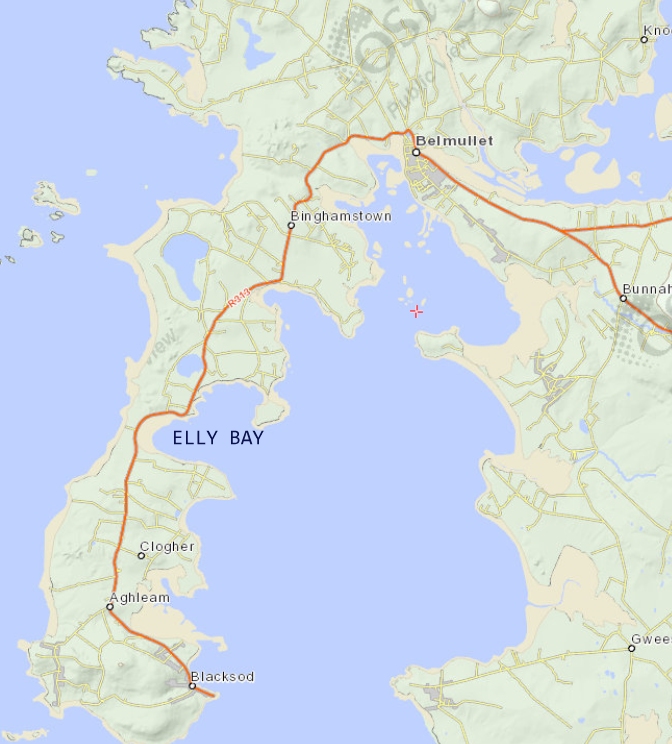 The crew of
the aircraft now stranded by Elly Bay, informed those members of
the Irish military that went to their aid that they had left
Montreal at 19:30 hrs the previous evening. At about 01:20 hrs
GMT the starboard engine seized up. They we unable to obtain
radio contact with the UK but were able to radio back to Canada
the situation. They carried on until making landfall with
Ireland and made a wheel up landing in a field. The Irish Air
Corps officers who attended the scene described the aircraft and
the damage to it. The were able to record its correct serial
number, FH263, upon further investigation along with the engine
serial numbers. They described its markings as standard British,
which one can take to be upper surfaces painted with brown and
Green camouflage. They were able to read the US Army Air Forces
serial number of 41-37064 off the fuselage also and reported
that the titles 'US ARMY' were painted on the bottom of the
wings.
The crew of
the aircraft now stranded by Elly Bay, informed those members of
the Irish military that went to their aid that they had left
Montreal at 19:30 hrs the previous evening. At about 01:20 hrs
GMT the starboard engine seized up. They we unable to obtain
radio contact with the UK but were able to radio back to Canada
the situation. They carried on until making landfall with
Ireland and made a wheel up landing in a field. The Irish Air
Corps officers who attended the scene described the aircraft and
the damage to it. The were able to record its correct serial
number, FH263, upon further investigation along with the engine
serial numbers. They described its markings as standard British,
which one can take to be upper surfaces painted with brown and
Green camouflage. They were able to read the US Army Air Forces
serial number of 41-37064 off the fuselage also and reported
that the titles 'US ARMY' were painted on the bottom of the
wings.
The aircraft had skidded 250 yards and gone through a fence with
concrete posts caused damage to the wing flaps. The propellers
were damaged and the fuselage was 'crushed'.
The crew of three gave their names to the Irish authorities as:
Pilot - C B Killops, Canadian, from Edmonton, Alberta
Navigator - A Lodge, British, from the The View, Alwoodly St,
Leeds
Wireless Operator - G M Morrish, Canadian, from Regina, Sask.
The men's names were corrected with the aid of Canadian Air
Force researcher, Hugh Halliday who confirmed that the two
Canadians were in fact:
Sgt Clifford Burns KILLIPS R/76953 and Sgt George
Marshall MORRISH R/85394
The third crew member, 'A Lodge' took a little more research but
thanks to having given his address to the Army, it was possible
for the library in Leeds to find that a Muriel Lodge was
registered at that address in 1945, along with a Herbert and
Mary Hardy. The 1939 register showed Muriel Hardy resident there
with the same two names. The marriage indexes for 1940 show a
marriage of a Muriel Hardy to a Eric O Lodge in Leeds. This name
of Eric O Lodge led us to the following airman who was
commissioned as an Officer in the RAF in 1943:
Sgt Eric Outram LODGE 1288028
In the Irish Army reports, almost no mention is made of the
dealings with the three airmen after the landing. It is
mentioned that they were bought to the Imperial Hotel in
Castlebar but little else beyond that. It would be expected that
they were brought to a border post late on the 15th April or
perhaps given a chance to rest and delivered the next day. All
three airmen were subsequently promoted to Officer rank and all
survived the war. From the Directorate of History and Heritage
in Canada it was possible to determine that all three had
returned to North America in August 1942 aboard the Queen Mary,
then traveled back to Canada and formed the Ferry crew on
Catalina FP191 to the UK. There after their wartime career
brought them elsewhere.
The image below was provided by L. Burke in 2017 and he
explained the provenance of the image as follows:
"Attached is a photograph of a plane
that crash landed at Elly Bay, Binghamton, Blacksod I
believe it is a Lockheed Hudson that crash landed on April
15, 1942. The photo was taken by my late uncle Sean Burke.
He told me that sightseers were kept away by the army. He
managed to talk his way into a nearby house and took the
photo through a window while keeping the camera hidden"
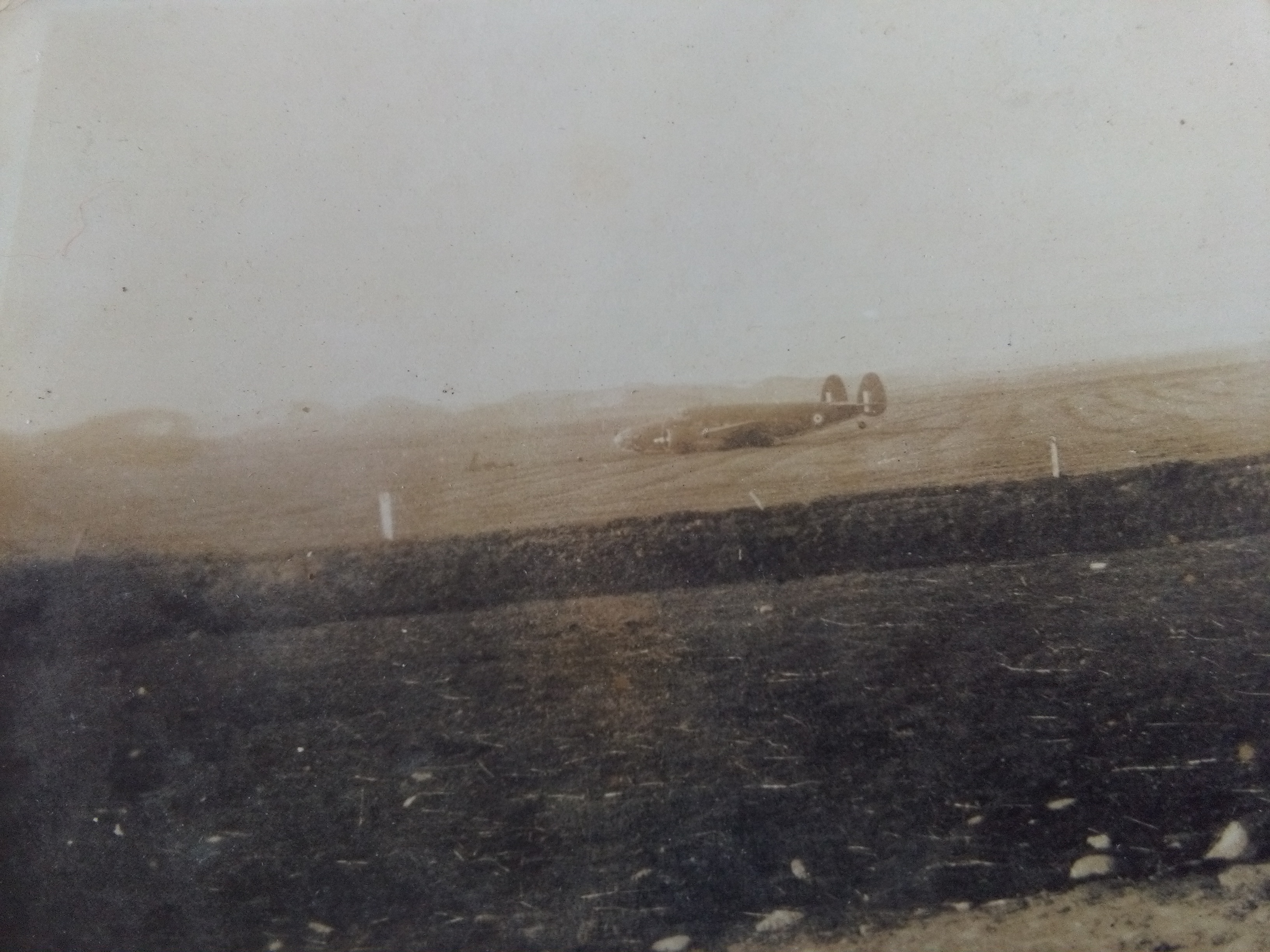
In 2024, during a visit to another wartime crash location, the
owner of that property produced a photocopy of an aircraft on a
loader on a road which he had been told was the Blenheim bomber
that crashed near Crossmolina in March 1942. It was
immediately obvious that it was a Hudson bomber and that if it
had passed through near Crossmolina during the war it must be
Hudson FH263. Of the nine Hudson which were involved in
wartime incidents in Ireland, only FH263 required dismantling
for salvage.

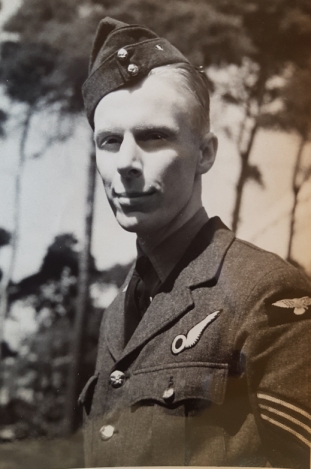 Eric
Outram Lodge was born in Huddersfield in November 1914,
the son of Florence and Herbert Lodge. His father joined
the army during the first world war serving with the West
Yorkshire Regiment and was killed in action on 17th Sep 1918,
probably in the fighting for Holnon Village.
Eric
Outram Lodge was born in Huddersfield in November 1914,
the son of Florence and Herbert Lodge. His father joined
the army during the first world war serving with the West
Yorkshire Regiment and was killed in action on 17th Sep 1918,
probably in the fighting for Holnon Village.
In the 1939 Register of September that year, Eric was
registered as working in education. Following his marriage
in 1940, he found himself in Montreal at the end of March, 1942
and ferrying Hudson FH263 to the UK via Presque Isle and
Gander. His stay in the UK lasted until August 1942 it
seems when he sailed to New York on the Queen Mary. His
service then during the last quarter of the year appears to
mimic that of Killips.
Eric served on operational missions with 119 Squadron from
January through to April 17th, 1943 when the Squadron was made
inoperative and all crew were posted on leave. His next
posting appears to have been to 210 Squadron, also flying on
Catalina's. He appears with the crew of P/O D H Clarke on
Jun 23rd 1943, flying from Hamworthy. In December of that
year, he is noted being sent on a bombing leaders course,
returning in mid January to Hamworthy with a note that he
achieved a 'B' rating in the course. The Squadron record
appendices then show that Eric was posted that January,
following the end of the training course, along with many 210
Sqn crews to 131 Coastal Operational Training unit based at
Killadeas, in Northern Ireland. He is found then again in
February 1944, being posted into 59 Squadron at Ballykelly as a
Navigator B until May of the same year.
Eric passed away at the age of 103 in St. Margaret's Bay, Kent
in May, 2018.
His family were kind enough to provide a number of photos of
Eric's including photos of Clifford and George.
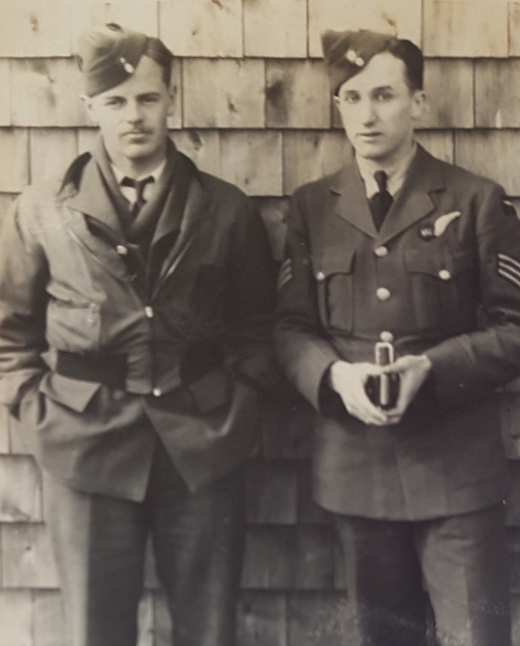 George
Morrish was born in Regina, Saskatchewan in 1918, the son
of Agnes and Marshall Morrish. The family moved to America
in 1926, destined to Portland, Oregon but the family did not
settle there it seems. His commission in July 1943 was
reported on by The Winnipeg Tribune, where he is listed as being
from Regina, Saskatchewan.
George
Morrish was born in Regina, Saskatchewan in 1918, the son
of Agnes and Marshall Morrish. The family moved to America
in 1926, destined to Portland, Oregon but the family did not
settle there it seems. His commission in July 1943 was
reported on by The Winnipeg Tribune, where he is listed as being
from Regina, Saskatchewan.
The Leader Post newspaper of Regina regularly reported his
wartime progress after his arrival in Europe, his father
having heard from him in April and the newspaper published the
news on April 27th. Later in November 1942, part of a letter
from George to his father was published, praising the welcome
and friendliness he experienced whilst stationed in Scotland.
Sgt Morrish remained with 119 Sqn until at least March 1943
flying as a WO/AG with a F/Lt Goodyear. He is next found
arriving in 490 (RNZAF) Squadron on the 24th June 1943. He
had flown in P/O R M Grants crew in Catalina FP278 from the UK
to Madagascar, flying from Bathurst to Jui. Over the
following months he flew many missions with R M Grant, though
rather strangely his initials for most missions are typed as
"Morrish, P". He received his commission as an officer
during this time. He flew a mission with the Squadron on
Oct 1st, 1943 and does not appear in the ORB again until
December 1943 when he is found teamed up with various crews
through to at least April 1944. The 490 Squadron ORB is
sparse on details of postings and about this time they began to
transition to the Sunderland flying boat. His service
details show he returned to Canada in late March, 1945 and
indeed a F/O G M Morrish is found on the passenger manifest of
the SS Pasteur arriving in New York on 30 March 1945. The
leader Post newspaper also recorded his returned from overseas
service in April 1945.
Based on the Leader Post paper, he stayed on in the RCAF post war and was on duty in October 1947 when papers referred to him as piloting search aircraft after the crash of RCAF Mitchell bomber 894. indeed, he was said to have been intended to be on the aircraft but was asked to swap with another crew member. He passed away in Penticton in November 1975, aged 57.
Happily however, it was possible to make contact with the pilot
of FH263, Clifford Burns Killips in 2008. Clifford, was
able to provide a wealth of information about his recollections
of the flight to Ireland and his subsequent wartime service.
Clifford sent on this photo of the crew.
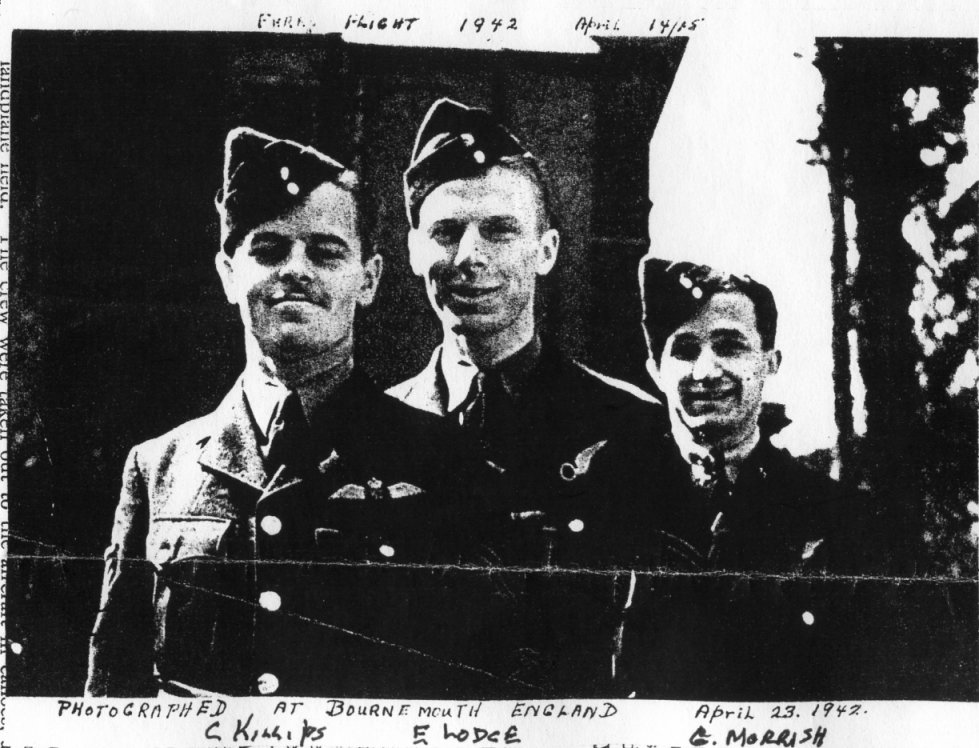
The family of Eric Lodge were able to provide a digital copy of
the same image following Eric's death.
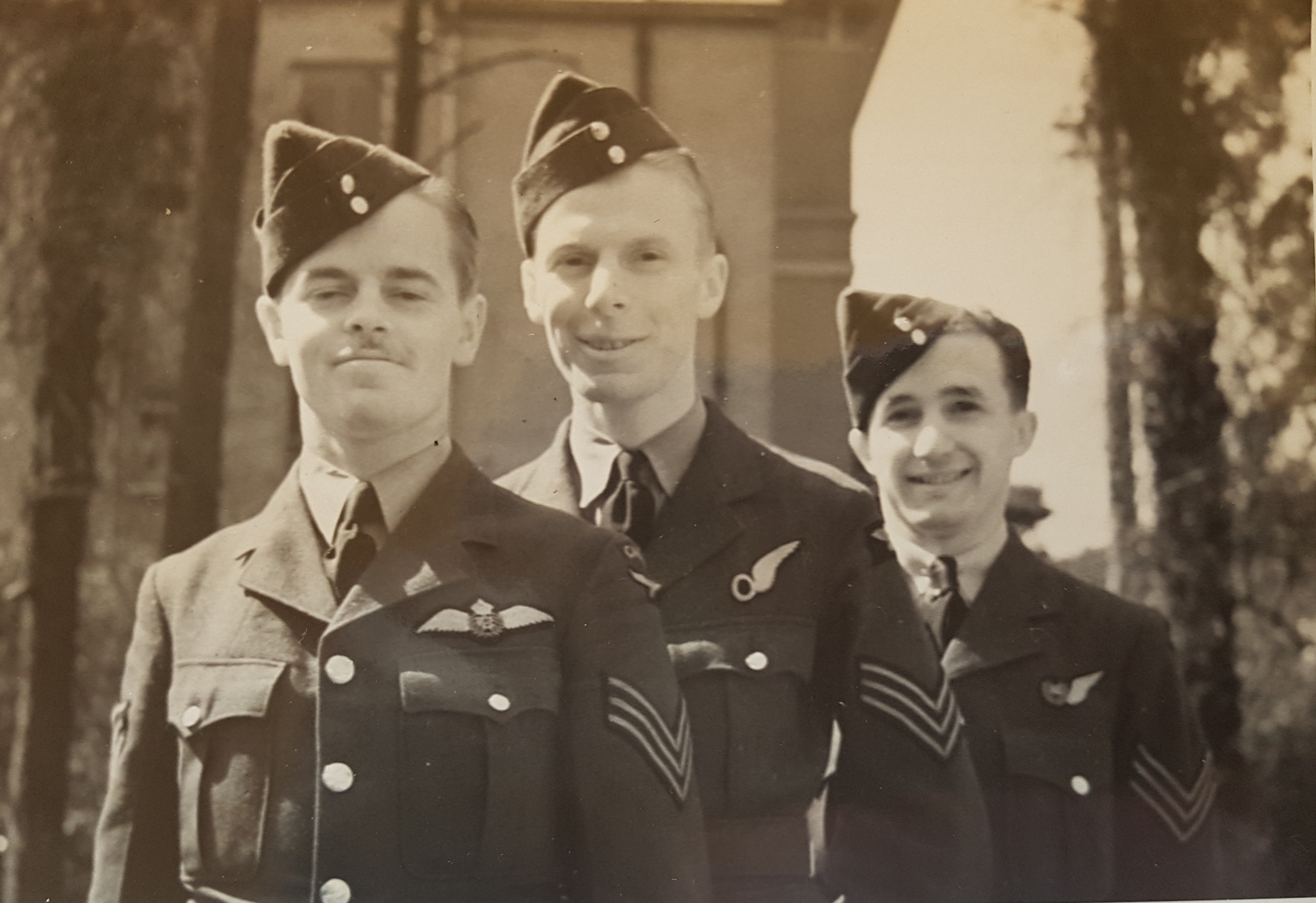
Clifford explained that he was assigned to 119 Squadron at
Lough Erne, Northern Ireland after his arrival from Ireland and
he is found in that units ORB assigned to special duty in August
1942. That task was for eleven crews to sail from Gourock
in Scotland to New York and thence forth to proceed to
Boucheville outside Montreal to collect new Catalina flying
boats and fly them to to Lough Erne and finally onto Beaumaris
in Scotland. This was undertaken on behalf of Ferry
Command due a shortage of ferry personnel. One of the
eleven crews consisted of F/Sgt Killips, Sgt Lodge, F/Sgt
Morrish and a Sgt Edwards, Flight Engineer. Following this
effort is was decided that the Squadron would convert to
Sunderland aircraft and Sgt Killips is recorded as posted to
Greenock for testing and ferrying on 25 Sep 1942.
The ORB for 202 Squadron based in Gibraltar reports the posting
in from 210 Squadron F/S Killips and Sgt Lodge with a Catalina
for temporary attachment on 10 Nov 1942, the day after the
Operation Torch landings in Morrocco. No mention of his
name is found thereafter in either the 202 or 210 Squadron ORB
but a group of personnel were dispatched back to the UK on
return posting to 119 Squadron before the end of the month.
Due to his posting to Gibraltar mentioned in his account below,
little other mention of him is found in 119 Squadron records
until January 1943 when he flies as third pilot with a P/O D B
Agate on a number Sunderland patrols and is finally posted to 4
(Coastal) Operational Training Unit on 14 Mar 1943.
Clifford's name appears in the summary of 265 Squadron's ORB in
March 1944, arriving with a new crew and aircraft from Mombasa
to Diego Suarez in Madagascar. He remained with the
Squadron in East Africa until February 1945.
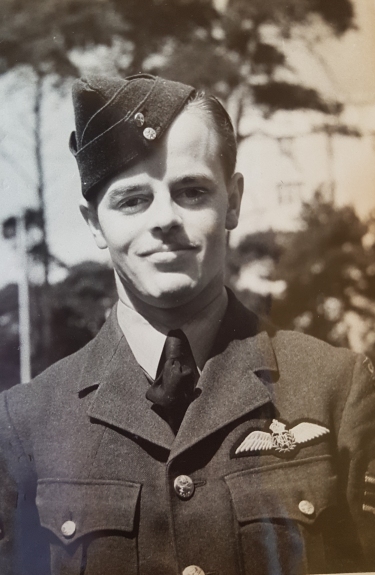 Clifford Killips gave this information about his
wartime service: The following are
more details of the ferry flight which ended in Ireland as
well as a short history of the crew as I recall.
Clifford Killips gave this information about his
wartime service: The following are
more details of the ferry flight which ended in Ireland as
well as a short history of the crew as I recall.
We the crew actually left Montreal for Gander Newfoundland
where we remained for a few days waiting for favorable
weather for the crossing. We left in the evening for the all
night flight to Prestwick Scotland. About 3 hours into the
flight and at 25000 feet we had an engine stop account
carburetor ice. As we lost altitude due to the failed engine
I recalled a more experienced airline pilot telling me that
back firing the engine will sometimes clear the ice. George
radioed the RAF to advise of our problems and their reply
was - Good Luck. At approximately 12000 feet the remaining
engine seized with a broken oil line. At this point the
navigator asked if he should set a course for the nearest
land but I remember saying "don't bother we've lost the
other engine" As a last chance I decided to try the backfire
solution on the first engine by closing the throttle and
then reopening it with ignition on. The engine backfired and
started to run. We were now down to 7000 feet and I managed
to stop the descent at 3000. We set course for the nearest
point of land in Ireland. When morning came we decided to
descend to locate the water and look for land as our fuel
supply was at a minimum and at 50 feet under a fog bank we
spotted a large island rock, circled it to find a sheltered
spot for ditching. We then saw more land and went in and
landed in farmer's field out of gas.
We were dead tired and got out and rested on the ground
until military members took us to the hotel to sleep for a
while.We were well cared for by the army who entertained us
on the roof garden pub and the Hotel dining room. After
three days We were contacted and told to go down to the
front entrance where a driver was waiting . I asked where we
were going and he said he would tell us later. We were
driven to the border of north Ireland he advised that he was
RAF and taking us to Belfast for interview and travel to
Bournemouth in England awaiting orders. On a leave later in
London I met a pilot from Belfast who mentioned that the
Hudson Bomber he was flying now had a funny history - having
arrived at the squadron by lorry. I guess we finally
arrived.
From Bournemouth we were sent to train on Catalina flying
boats in Lough Erne in N.Ireland . After training we were
sent by ship to New York and train to Montreal where new
Catalinas were waiting to be flown to the U.K. This trip was
long but uneventful back to Lough Erne. Our crew was
directed to fly this aircraft to Beaumairas in Northern
Wales, leave it there and train to Pembroke Dock, S.Wales.
where the squadron was to be equipped with Short Sunderland
flying boats and operate out of there. I was dispatched on
temporary duty with a Catalina to operate out of Gibraltar
to cover the departure of the French Fleet if they left
harbour. They didn't and the Germans took control. Later we
were sent out into the Atlantic to cover the American
landing in North Africa where the American merchant ship
shot down one of our aircraft by mistake. After returning to
our Squadron in Wales I was ordered to a O.T.U in Scotland
to train new crews on Catalinas. I asked the commander if he
could transfer me to a squadron somewhere and he advised
that pilot had been killed practicing night landings and
they needed a pilot for this crew in Lough Erne Ireland I
accepted this offer, finished their training and left for
265 Squadron based in Madagascar off East Africa operating
through Indian ocean and over most of Africa. After about 2
years I was flown back to the U.K and finally by ship to
Canada where I was discharged.
After the war I joined Air Canada where I was based in
Toronto and flew for 1946 to 1984 then retired. After
retirement I became an investment broker and trust company
executive and retired again and live in Florida.
George Morrish, last I heard was living in Penticton,
British Columbia as a government employee. I never had
contact with Eric Lodge after we were separated to different
squadrons.
The aftermath of this particular incident in Belmullet provides
a little humour in an otherwise dark subject. Hudson FH263 was
unable to make its way out of Ireland under its own power and
the Irish Air Corps did not undertake the salvage of the wreck.
To the rescue came an RAF party from Northern Ireland under a
Fl/Lt Forde and a Sqn/Ldr Kemp from RAF Sydenham. Some of
this party consisted of No. 1 Salvage Team from 11 Repair and
Salvage Unit (RSU) based at Mallusk. The units Operations
Record Book recorded the dispatch of the team on April 19 and
its return from Eire on 2 May. It is thought that the
Fl/Lt Forde was one Fl/Lt Phineas William FORD 77221 and the
surname spelling of Forde is that used by the Irish Military in
their reports.
The story of the salvage operation of FH263 is told in a wonderful fashion by an Irish Army Officer who accompanied the RAF party over the six days from April 25th to 30th. The officers dislike for the actions of the RAF officers is very apparent in reading report. To summarise his multi-page report, F/Lt Forde arrived on the 24th April with the main party, S/Ldr Kemp later arrived along with F/Lt Forde's wife. ON the Sunday, 26th of April they attended mass except S/Ldr Kemp who "not to enthusiastic about religion in any form". On the monday the convoy left Elly Bay and stopped for the night at Beltra in Sligo. The unwieldy vehicles made transporting the disasembled parts of FH263 extremely difficult. The convoy stayed the night at Hazelwood House in Dromohair, Sligo. Proceedings were held up on the morning of the 29th when F/Lt Forde and his wife "indulged in an orgy of shopping" thus delaying departure of the convoy. The vehicles finally reached the border at Garrison at 17:10 on the 30th of April.
